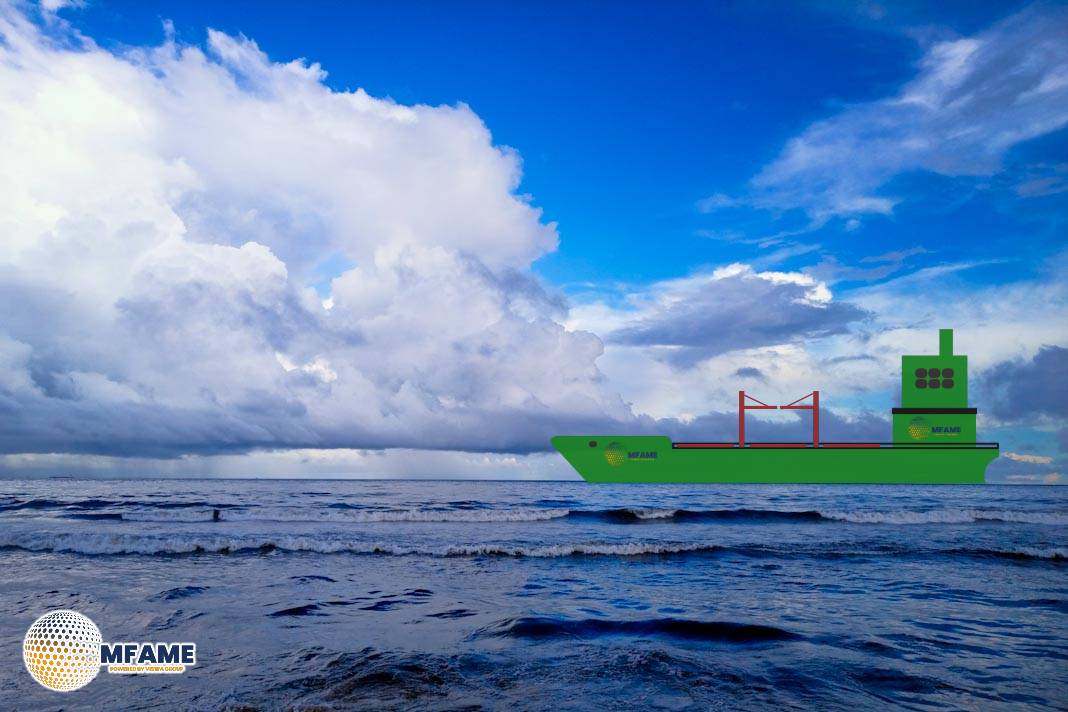A groundbreaking innovation is transforming how carbon emissions are handled in the maritime and construction industries, reports The Next Web.
London-based startup Seabound has developed a carbon capture system that operates directly aboard cargo ships. This system is currently being tested on the UBC Cork, a cement carrier navigating the Mediterranean Sea. Instead of releasing carbon dioxide into the atmosphere, the vessel captures it and converts it into limestone, a key ingredient in cement production. Once the ship reaches port in Norway, the captured limestone will be delivered to Heidelberg Materials’ net-zero cement plant in Brevik.
A Simple, Scalable Technology
The carbon capture system is ingeniously compact. It fits into standard shipping containers and attaches to the ship’s exhaust system. As the ship operates, the exhaust gas—rich in CO₂—is passed through a chamber filled with quicklime (calcium oxide). This triggers a chemical reaction that turns the CO₂ into calcium carbonate (limestone). Unlike other carbon capture methods that rely on energy-intensive liquefaction or compression, Seabound’s approach uses basic, efficient chemistry. This modular system can be scaled easily across different ship sizes and voyage lengths.
Addressing Two Emissions Giants
This innovation tackles two of the world’s most carbon-intensive industries at once. The shipping sector accounts for nearly 3% of global CO₂ emissions, while cement production contributes roughly 8%. Seabound’s technology creates a circular solution—capturing emissions from ships and repurposing them into a product that offsets emissions in construction. It also aligns with regulatory goals set by the International Maritime Organization (IMO), which targets a 30% reduction in emissions by 2030, increasing to 65% by 2040. For shipping companies facing growing pressure, Seabound’s system offers a near-term decarbonization option before green fuels like hydrogen and ammonia become mainstream.
Challenges and the Road Ahead
Despite its promise, the system isn’t without drawbacks. The production of quicklime itself generates CO₂, meaning the full environmental impact depends on sourcing it from renewable or low-emission methods. Seabound is actively exploring “green” quicklime options to reduce this footprint. Additionally, experts warn that while carbon capture is a helpful transitional tool, it should not replace long-term investment in zero-emission propulsion systems. Still, the flexibility and portability of Seabound’s system make it a compelling solution—particularly for retrofitting existing fleets.
Seabound’s innovation aboard the UBC Cork marks a significant step in maritime decarbonization. By capturing exhaust CO₂ and converting it into limestone used in cement production, this system not only reduces emissions but also creates value from what was once waste. It’s a smart, scalable approach that bridges two major polluting sectors. With continued refinement and integration of cleaner materials like green quicklime, such systems could play a pivotal role in the race toward a low-carbon future.
Did you subscribe to our Daily newsletter?
It’s Free! Click here to Subscribe!
Source: The Next Web
















![[Watch] How a Ship Engine Works – 4 Stroke Marine Diesel Engine](https://mfame.guru/wp-content/uploads/2023/11/mfame-tanker-100x70.jpg)